Colorado Midland Modeler
Proudly modeling the CM, MT & SL in HO Scale
I'll have to look into that, thanks!I got a bit behind on this thread like Mike did. You posted:
Check out MiniPrints for beavers.
MiniPrints Beavers
I'll have to look into that, thanks!I got a bit behind on this thread like Mike did. You posted:
Check out MiniPrints for beavers.
MiniPrints Beavers
Thank you! Having grown up in the area, I know the Ute Pass area quite well due to my close proximity to it, so I looked at photos like this street view screen shot of Tunnel 8, sometimes called "The Black Crags" (below) and tried to approximate the look of it to the best of my ability. Albeit, selectively compressed.That is wild (in the coolest sense of that word). I like the desert pastel colors you've used on the railroad. Being an every year traveler to the wild west, i really like your depiction of the Colorado area.
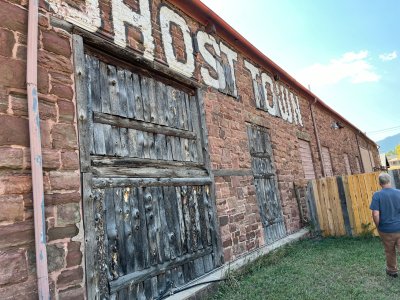
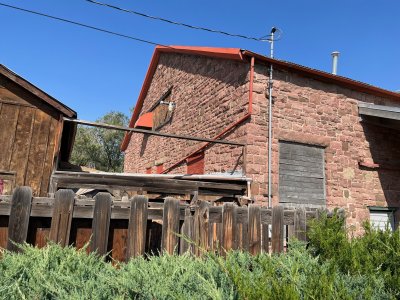
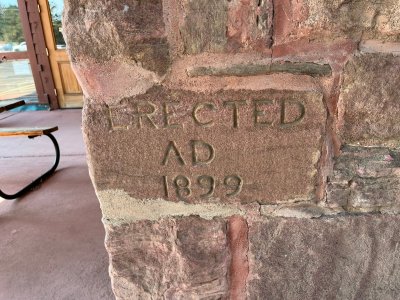
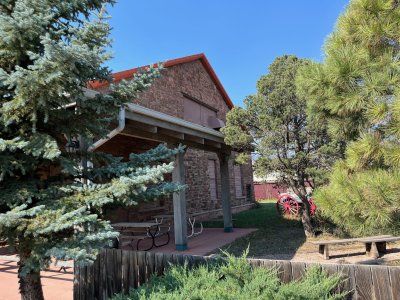
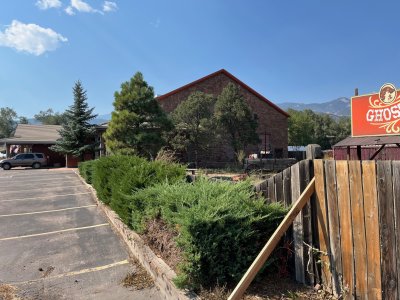
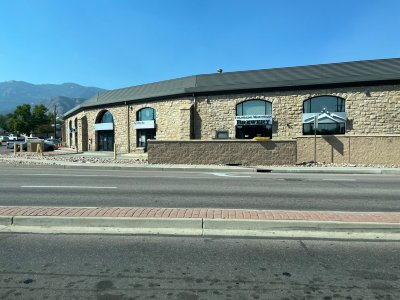
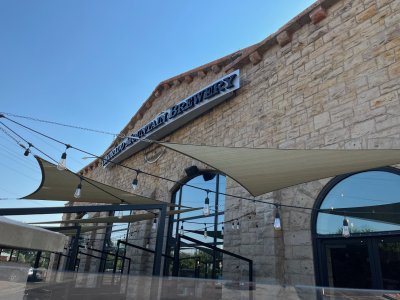
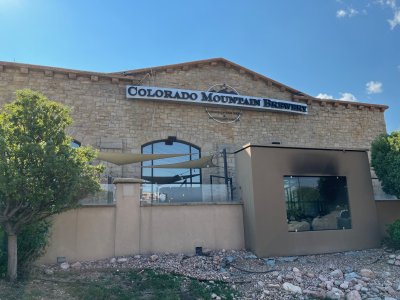
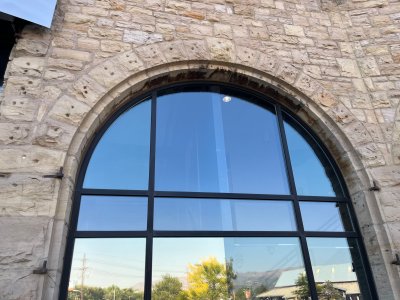
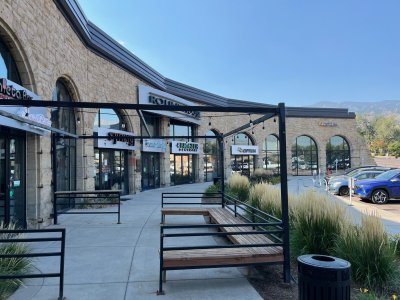
Thanks! I'm glad to know that I'm helping. I lived just a short distance from it for many years, so I was able to study it pretty good. I've looked for historic interior as well, but I don't know of any. I would imagine that it probably wasn't that different from any other roundhouse on the inside. I have quite a few of the books on the CM, as well as the Midland Terminal, and I do know that according to Mr. Mel McFarland's excellent book on the MT, "The Cripple Creek Road", that the roundhouse had several inspection and repair pits in it, but I'm not sure what stalls they were in. If you're interested in the historic photos, the Denver library has a great digital archive with many photos of the CM. Just type "Colorado Midland Railway" into their search box. https://digital.denverlibrary.org/Wow! What a great job on modeling the Colorado Midland roundhouse, and the whole layout in general. It's an inspiration for me to get moving on my roundhouse kit and yard layout!
Over the past several years I've been able to acquire all the kit components for the Model Masterpieces Ltd. Colorado Midland Roundhouse. I'd like to model as much of the Colorado City yard as I can. I wanted to get back down to take photos the actual roundhouse again and was able to do so in early October of 2024. Does anyone know if there are any publications, photos or research available about the interior of the roundhouse? I'd like to add interior details, inspection pits, etc. to my kit. I know the generalities of a roundhouse, but was hoping to be somewhat accurate about what the interior may have been like or included.
Once again, great work! Thanks for posting the details and photos of your layout. They're already giving me ideas on how and what to do with my layout. I've attached photos of the roundhouse and what was the machine shop next door, now the Ghost Town Museum as you mentioned.
That's a great photo, isn't it? The Poverty Gulch Wye still exists, albeit filled now. The narrow gauge uses it now.Yeah, the Denver library digital collection contains some great images. It is unfortunate that no roundhouse interior shots are available. Lord knows they captured enough hotel interiors, lol. There are locomotive shots that show background of the roundhouse area and turntable.
This photo caught my eye because of the modeling potential of a wye with two elevated legs. The caption reads "View of Midland Terminal Railway wye, Poverty Gulch, Cripple Creek, Colorado". That would be a cool scene for a model railroad.

Happy to help! Now, if you really want to go down the CM rabbit hole, like I did,Thanks for the tip on Mr. Mel McFarland's "The Cripple Creek Road" book. I just ordered a copy.
I did discover the digital archive on the Denver library website among others, and yes, it is very interesting if you pay attention to the background of photos what you can see and learn.
I love before and after pics of historic places! That is amazing to see the wye still exists. Interesting to see the fills where the trestles once were (and still are, under the fill). Also had no idea you had it on the layout. Looks great!That's a great photo, isn't it? The Poverty Gulch Wye still exists, albeit filled now. The narrow gauge uses it now.View attachment 206869
I somewhat modeled the wye, albeit condensed due to space limitations. I thought I took some other photos of it, but this is the only one I could find. It focuses more on Poverty Gulch than anything, but you can kind of get an idea of what it looks like. It's behind the road bridge.View attachment 206870
Yes, it was indeed. The Midland Terminal connected to the Colorado Midland at the town of Divide, and was built as standard gauge. Interestingly, the MT was thinking about building as narrow gauge, but decided to go standard gauge to make it easier to interchange freight with the CM. When the CM closed, the MT bought their tracks and yards etc. from Divide to Colorado Springs. When the MT closed in 1949, their track was torn up and the grade abandoned until the current Cripple Creek & Victor Narrow Gauge RR started operations in 1967 on a portion of the old MT grade. The CC & VNG RR also uses a small segment of the long gone Florence & Cripple Creek RR, which was 3 foot narrow gauge.So the Cripple Creek Railroad was a standard gauge back in the day? From what i understand originally built as a narrow gauge and changed over to standard gauge?
Thank you! I'm glad you like the look of it. Here's another before and after you might find interesting. It's the Old Colorado City roundhouse and machine shop, the machine shop now being the Ghost Town museum.I love before and after pics of historic places! That is amazing to see the wye still exists. Interesting to see the fills where the trestles once were (and still are, under the fill). Also had no idea you had it on the layout. Looks great!
I still want to go to Cripple Creek and look around. Silverton is another area I want to return to after reading the book "Three Little Lines".
What did they offload from the ramp and platform next to the roundhouse, I wonderThank you! I'm glad you like the look of it. Here's another before and after you might find interesting. It's the Old Colorado City roundhouse and machine shop, the machine shop now being the Ghost Town museum.
This one was taken in either the 1930s or 1940s during the Midland Terminal years.
View attachment 207119
This one is a current screenshot of it from Google Earth. The office building in front of the machine shop burned down in the early 1950s, but interestingly, you can still make out where it stood in between the machine shop and the current US24, AKA, the Midland Expressway. There's a triangular sign in the middle of the outline.View attachment 207121
That was a coaling trestle for the locomotives. A locomotive would push several gondolas up it and they would be unloaded into the coal bins for the locos to use. You can see a little bit of how they did it starting at the 3:27 mark in the YouTube video I'm posting the link to. I would have liked to included it in my layout, but it would have been gigantic, so I built a modern concrete coaling tower like the CM probably would have built if they had survived into the late steam era.What did they offload from the ramp and platform next to the roundhouse, I wonder
Living in Pennsylvania, being in Colorado is pretty exotic. One of the things i like to do there, is to travel on the secondary roads say from Ridgeway toward Denver and spot the old narrow gauge grades along the way, try to figure out where they go. Sometimes the railroad grade merges into the paved road, which tells me the paved road used the railroad grade to get across in some spots. I don't study Colorado/New Mexico narrow gauge railroads per say, but on occasion i do read about them and definitely go on the surviving pieces which are still being used. The narrow gauge fans definitely have the advantage of much written material to draw from, especially thick volumes of hard covers written by hard core enthusiasts in the past.Yes, it was indeed. The Midland Terminal connected to the Colorado Midland at the town of Divide, and was built as standard gauge. Interestingly, the MT was thinking about building as narrow gauge, but decided to go standard gauge to make it easier to interchange freight with the CM. When the CM closed, the MT bought their tracks and yards etc. from Divide to Colorado Springs. When the MT closed in 1949, their track was torn up and the grade abandoned until the current Cripple Creek & Victor Narrow Gauge RR started operations in 1967 on a portion of the old MT grade. The CC & VNG RR also uses a small segment of the long gone Florence & Cripple Creek RR, which was 3 foot narrow gauge.
There's tons of stuff on the narrow gauge roads, you could very easily spend years just reading about the Rio Grande's narrow gauge lines alone, not even counting all of the other roads that have come and gone. It's a lot of fun though.Living in Pennsylvania, being in Colorado is pretty exotic. One of the things i like to do there, is to travel on the secondary roads say from Ridgeway toward Denver and spot the old narrow gauge grades along the way, try to figure out where they go. Sometimes the railroad grade merges into the paved road, which tells me the paved road used the railroad grade to get across in some spots. I don't study Colorado/New Mexico narrow gauge railroads per say, but on occasion i do read about them and definitely go on the surviving pieces which are still being used. The narrow gauge fans definitely have the advantage of much written material to draw from, especially thick volumes of hard covers written by hard core enthusiasts in the past.
Thank you! I'm glad you like the look of it. Here's another before and after you might find interesting. It's the Old Colorado City roundhouse and machine shop, the machine shop now being the Ghost Town museum.
This one was taken in either the 1930s or 1940s during the Midland Terminal years.
View attachment 207119
This one is a current screenshot of it from Google Earth. The office building in front of the machine shop burned down in the early 1950s, but interestingly, you can still make out where it stood in between the machine shop and the current US24, AKA, the Midland Expressway. There's a triangular sign in the middle of the outline.View attachment 207121
Me too! I'm actually in the final stages of a scratch build of this building for my Old Colorado City yard. Hopefully, I'll have some pictures of it in the near future. In the meantime, here's some more photos I found of the real thing that you might enjoy looking at.OUTSTANDING!!! I much prefer the "before" pic, lol.
That is a super cool building. I love the photo with the freight cars, makes great modelling ideas.Me too! I'm actually in the final stages of a scratch build of this building for my Old Colorado City yard. Hopefully, I'll have some pictures of it in the near future. In the meantime, here's some more photos I found of the real thing that you might enjoy looking at.View attachment 207358View attachment 207359View attachment 207360View attachment 207361

